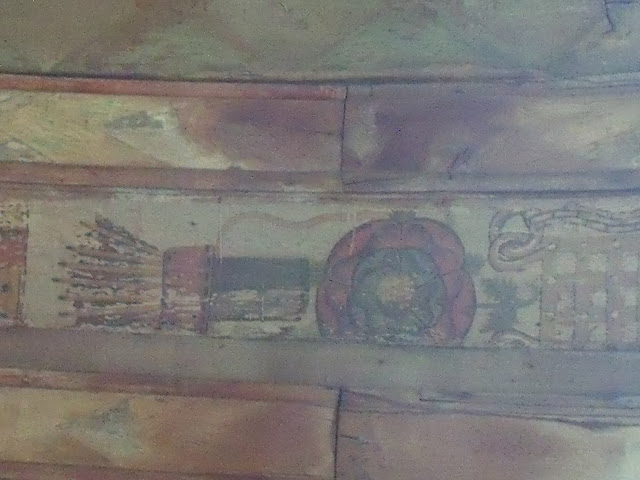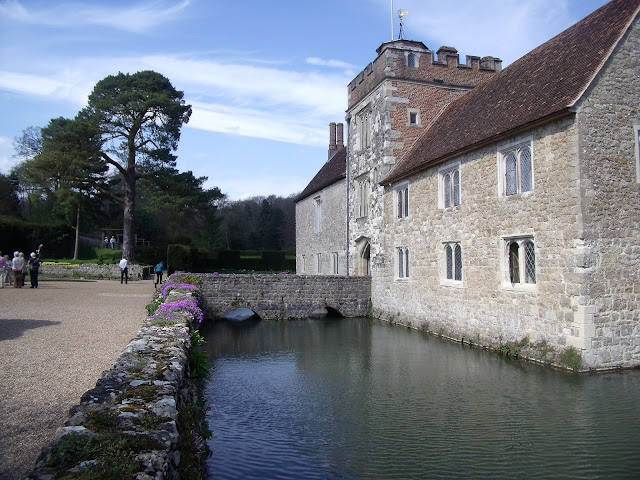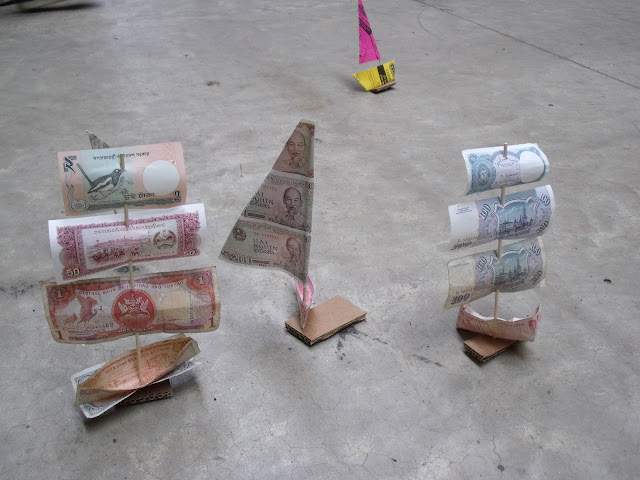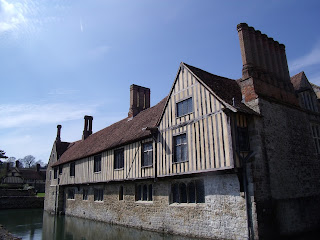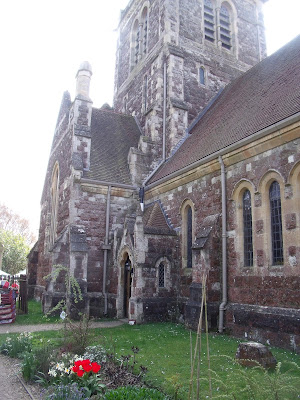This post has taken me a little longer to publish than usual as one of my followers Andrew from http://highriser.blogspot.com/ wanted to know why Mote was not spelt as moat. This had me stumped and I just couldn't find the answer on Ightham's website or literature or google (although it must be there somewhere). So today I phoned the National Trust at Ightham Mote who told me it was the old French word for moat.
Ightham Mote began life in the 1340s with a Great Hall of which the roof still survives today.
Over the next 300 years, a chapel, crypt and two rooms known as solars were developed until the buildings had formed a quadrangle around a courtyard.
Looking into the chapel through the hole in the wall of an adjoining room. During medieval times only ordained men were allowed into the chapel whilst mass was being conducted by the priest. Others watched from another room. The height of the hole was such that you could see the altar only when you were kneeling down.
Sir Richard Clement bought the mote in 1521 and as he was an admirer of Henry VIII he had symbolic tributes such as the Tudor Rose and the portcullis painted on the roof of the new chapel building.
During its 690 years the Mote has in the main been owned by only two families, neither of which were particularly wealthy . As a consequence neither family knocked down parts of the house or did major rebuilding. They just modernised it as and when necessary. So it has six centuries of different types of decor and styles. In 1985 the property was bequeathed to the National Trust which undertook extensive conservation and repairs to the property taking until 2004 to complete. It is quite an unusual building to wander around as you go from medieval to Tudor to Victorian to 20th cent.


The Oriel room - the family drawing room.
A few photos of the gardens
Ightham Mote began life in the 1340s with a Great Hall of which the roof still survives today.
Over the next 300 years, a chapel, crypt and two rooms known as solars were developed until the buildings had formed a quadrangle around a courtyard.
 |
| The crypt |
Looking into the chapel through the hole in the wall of an adjoining room. During medieval times only ordained men were allowed into the chapel whilst mass was being conducted by the priest. Others watched from another room. The height of the hole was such that you could see the altar only when you were kneeling down.
Sir Richard Clement bought the mote in 1521 and as he was an admirer of Henry VIII he had symbolic tributes such as the Tudor Rose and the portcullis painted on the roof of the new chapel building.
During its 690 years the Mote has in the main been owned by only two families, neither of which were particularly wealthy . As a consequence neither family knocked down parts of the house or did major rebuilding. They just modernised it as and when necessary. So it has six centuries of different types of decor and styles. In 1985 the property was bequeathed to the National Trust which undertook extensive conservation and repairs to the property taking until 2004 to complete. It is quite an unusual building to wander around as you go from medieval to Tudor to Victorian to 20th cent.

 |
| During Victorian times the Butler was responsible for the safe keeping of the family's silver. It was stored here in this large safe inside the butler's pantry. |

The Oriel room - the family drawing room.
 |
| Original roof can just be seen through the ceiling. |
 |
| A painting of Igtham Mote by Winston Churchill which is displayed in the library. |
A few photos of the gardens





